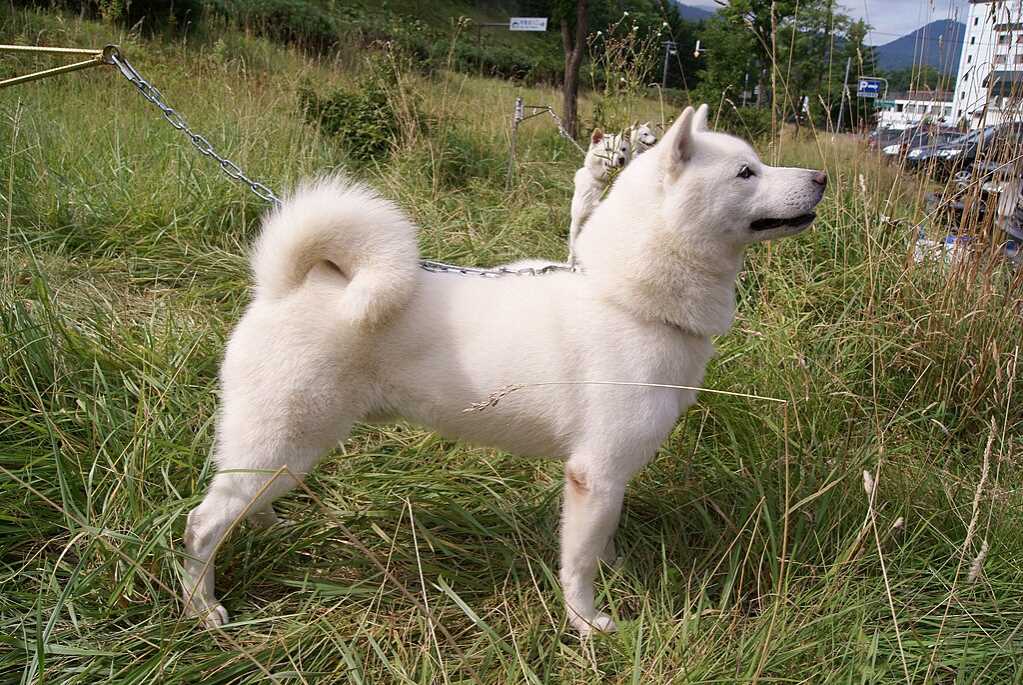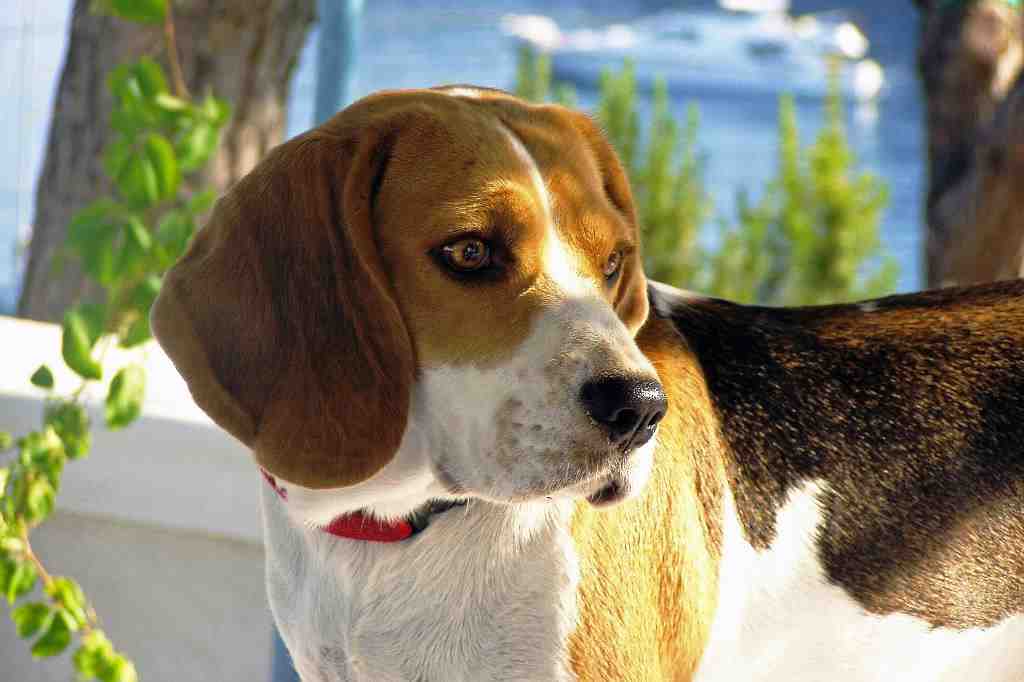The Hokkaido dog breed owes its name to the island of Hokkaido, an island in Japan, where it is thought to have been imported in the 1100s. Having always remained on this island, the gene pool of these dogs has been preserved pure and not crossed with other breeds. Experts believe it is probably the most primitive and oldest of the Japanese dog breeds. It is even dated over 3000 years old.
It most probably descends from ancient Japanese hunting dogs called matagi-ken. They were brought to the island by the Ainu peoples. Many Hokkaido have blue tongues, so they are thought to have a common origin with the chow chow and shar pei.
The Hokkaido is primarily a hunting dog; in fact, they were used to hunt brown bears. They would attack it from behind by biting it in the neck area until it was exhausted. It was also used to hunt deer and wild boar. It is a breed that barks a lot while chasing prey, so that the hunter can always determine their position, making the hunt easier. The Ainu people, who were skilful fishermen, used this dog as a helper when catching salmon upstream in rivers.
This breed was first described in 1869 by explorer and naturalist Thomas W. Blakiston, and in 1937 it was even declared a ‘natural monument’ by the Japanese Ministry of Education and later a national monument.
In Japan, Hokkaido people have successfully contributed to search and rescue operations. One memorable rescue from 1902, when an army expedition was caught in a blizzard in the Hakkoda Mountains and its members were found by these dogs.
Only recently, this breed has also been used as a companion and guard dog.
Character of the Hakkaido dog breed
The main characteristic for which the Hakkaido is known is its loyalty to its owner, followed by its courage and ability to withstand the cold. Its predisposition is for hunting, but it has become an excellent companion and guard dog, as it is a very shy and reserved breed with strangers.
It is a very intelligent animal, so its training is easy. But he must recognise the authority of the pack leader, who must be able to educate him and be a point of reference for him. It is therefore not suitable for those who have no experience in dog training.
If well socialised, it has no problem living with other animals and also with cats and small pets. It adapts well to living in a flat, but needs to go out often and do a lot of exercise to stay in shape.
Its playful nature makes it an ideal playmate for children, with whom it interacts patiently, but needs them to be respectful of its space and quiet time.
Appearance of the Hokkaido dog breed
The Hokkaido is a medium-sized dog, with the height at withers of a male ranging from 48 to 51 centimetres and weighing 20 to 25 kilograms. The female usually a little less. It has a powerful and muscular body with a solid frame. Its proportions are harmonious and its build excellent without being heavy. Its gait is loose and light; it is fast and its preferred gait is galloping, with a good lengthening of the hindquarters.
Its legs are long, sturdy and strong, very well suited to running in rough terrain. The tail is high and very thick, and is usually carried rolled over the back or curved into a sickle.
The skull of the Hokkaido is broad and slightly flat with a cone-shaped muzzle. It has strong jaws and its tongue may be black or blue. The ears are small, triangular and slightly tilted forward, the relatively small eyes are triangular and spaced apart. The truffle is usually black, but in specimens with a white coat it can also be flesh-coloured.
The coat has a long, coarse first coat and a shorter, softer undercoat that enables it to cope with very cold temperatures. The coat colours can be red, black, fiery black, white, but also tiger and fawn with black tips.
Care and health of the Hokkaido dog breed
This breed is characterised by excellent robustness and endurance. Its life expectancy is around 15 years, incidentally a remarkable age considering its size. It is not prone to any particular health problems, it is extraordinarily hardy, withstands great cold and even blizzards, whereas in hot weather its activities must be reduced to the cooler hours of the day. It has no overweight problems if its need for exercise is met.
One must in fact consider that this breed needs a lot of exercise and several outings a day, so it is not suitable for lazy or elderly people.
With regard to coat care, it must be brushed at least 2 or 3 times a week, every day during the moulting period. It must also be taken into account that it has significant hair loss, not only during the moulting period.


